Should You Add a Sump to Your Aquarium?
Should You Add a Sump to Your Aquarium? Pros, Cons, and Cool Facts for Hobbyists

Whether you're a seasoned aquarist or just starting to dip your toes into the deeper waters of the hobby, you've probably heard fellow enthusiasts raving about sumps. But what exactly is a sump, and should you dive into adding one to your aquatic oasis? Let's explore this captivating piece of equipment that's become a game-changer for serious hobbyists across the US.
What Exactly Is an Aquarium Sump?
Think of a sump as your tank's secret underwater headquarters: a secondary tank positioned beneath your main display that receives water from above and houses all the behind-the-scenes filtration magic. This hidden gem creates a continuous flow system where water cascades down from your main tank, gets thoroughly processed, and returns crystal-clear and revitalized.
The beauty of a sump lies in its versatility. It's essentially a blank canvas where you can house heaters, protein skimmers, UV sterilizers, media reactors, and refugiums: all the equipment that would otherwise clutter your mesmerizing display tank.
When Does a Sump Make Sense for Your Setup?
Tank size is your primary compass when navigating this decision. For tanks under 75 gallons, the benefits often don't justify the added complexity and investment. However, once you're swimming in the realm of 75-100+ gallon systems, especially if you're planning a well-stocked aquatic community, a sump transforms from luxury to necessity.
Sumps truly shine for:
- Large display tanks (100+ gallons)
- Multiple tank systems in one location
- Serious breeding operations
- Reef tanks requiring multiple filtration stages
- Heavily stocked freshwater communities
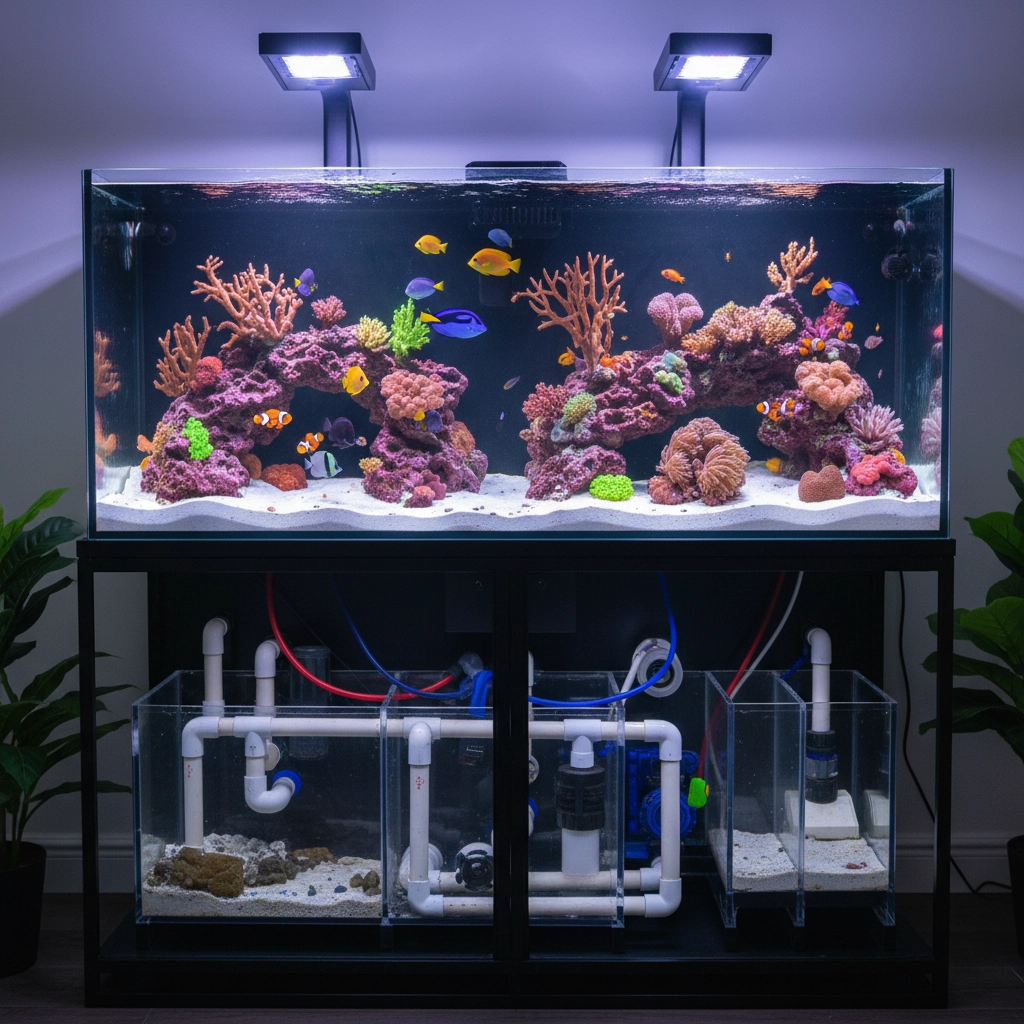
Important consideration: Adding a sump typically requires drilling overflow holes in your tank glass, which isn't always feasible for existing setups. Planning ahead during your initial tank selection can save you headaches down the road.
The Dazzling Advantages That Make Hobbyists Dive In
Superior Water Quality and Stocking Freedom
Here's where sumps truly make waves: they hold significantly more biological media than traditional filters, creating an underwater paradise with crystal-clear, incredibly healthy water. This enhanced filtration capacity means you can stock your tank much more densely, whether you're dreaming of a vibrant community of smaller fish or showcasing some impressive larger species.
Maintenance That Actually Makes Sense
If you've ever spent 45 minutes wrestling with a canister filter, you'll appreciate this: basic sump maintenance with polyester mat filtration takes about 5 minutes. Some advanced setups using fluidized bed filtration require virtually no cleaning at all: imagine that freedom!
Equipment Integration Paradise
Your sump becomes the command center for all your essential equipment. Protein skimmers work far more effectively in-sump than their hang-on counterparts, while heaters, UV sterilizers, and media reactors can operate efficiently without disrupting your display tank's aesthetic appeal.
Increased Water Volume = Increased Stability
The extra water volume acts like a buffer against those dreaded temperature swings and chemistry fluctuations. More water means changes happen more slowly and less dramatically: it's like having a built-in insurance policy for your aquatic friends. During power outages or equipment failures, that extra water volume can prevent catastrophic ammonia spikes.
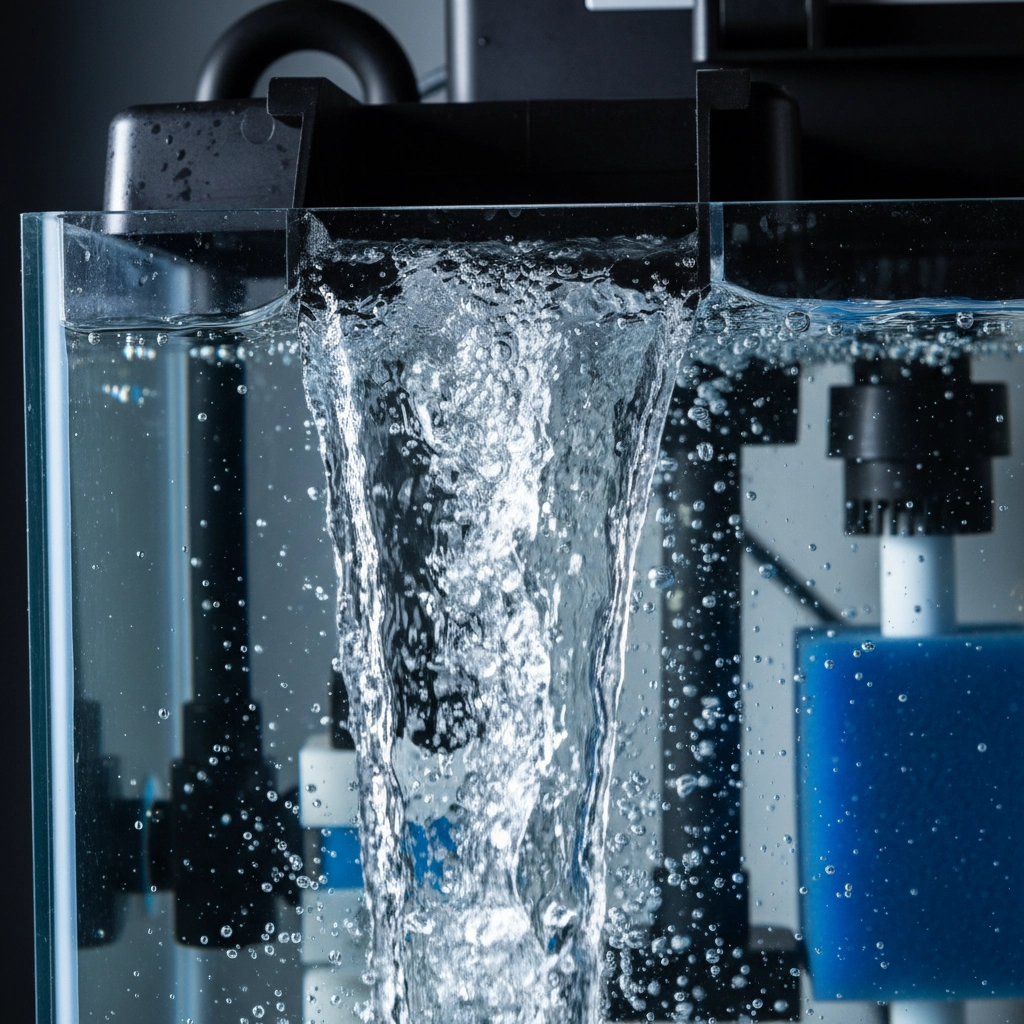
Natural Oxygenation Boost
Water cascading into your sump via gravity naturally adds oxygen to the system. Combined with protein skimmers that inject even more oxygen, your pH levels stay more stable and your fish breathe easier.
Long-term Value Investment
Quality sumps can last for years with only occasional pump replacements, while canister filters typically need replacement within 1-7 years. You can even build a DIY sump for around $150, while comparable high-end canisters like the FX6 cost over $300.
The Challenges That Might Give You Pause
The Sound of Success (And It's Not Silent)
Sumps can produce considerable gurgling and water noise: something to consider if your tank is in a bedroom or quiet living space. While the sound is soothing to some hobbyists (think of it as your personal aquatic waterfall), others find it disruptive.
Maintenance Complexity Trade-offs
While basic cleaning is easier, some sump components require weekly attention. Filter socks, for example, need regular removal and pressurized cleaning: a genuine commitment that becomes part of your aquarium routine.
DIY Plumbing Adventures
Unlike the plug-and-play simplicity of hang-on filters, sumps require plumbing skills and approximately six different safety features to prevent overflows. You'll need to become comfortable with DIY installation and troubleshooting.
Initial Investment Considerations
Sump pumps need more power than regular aquarium pumps, typically costing $60 or more. Quality manufactured sumps designed for saltwater often require modifications for freshwater use and carry premium price tags.
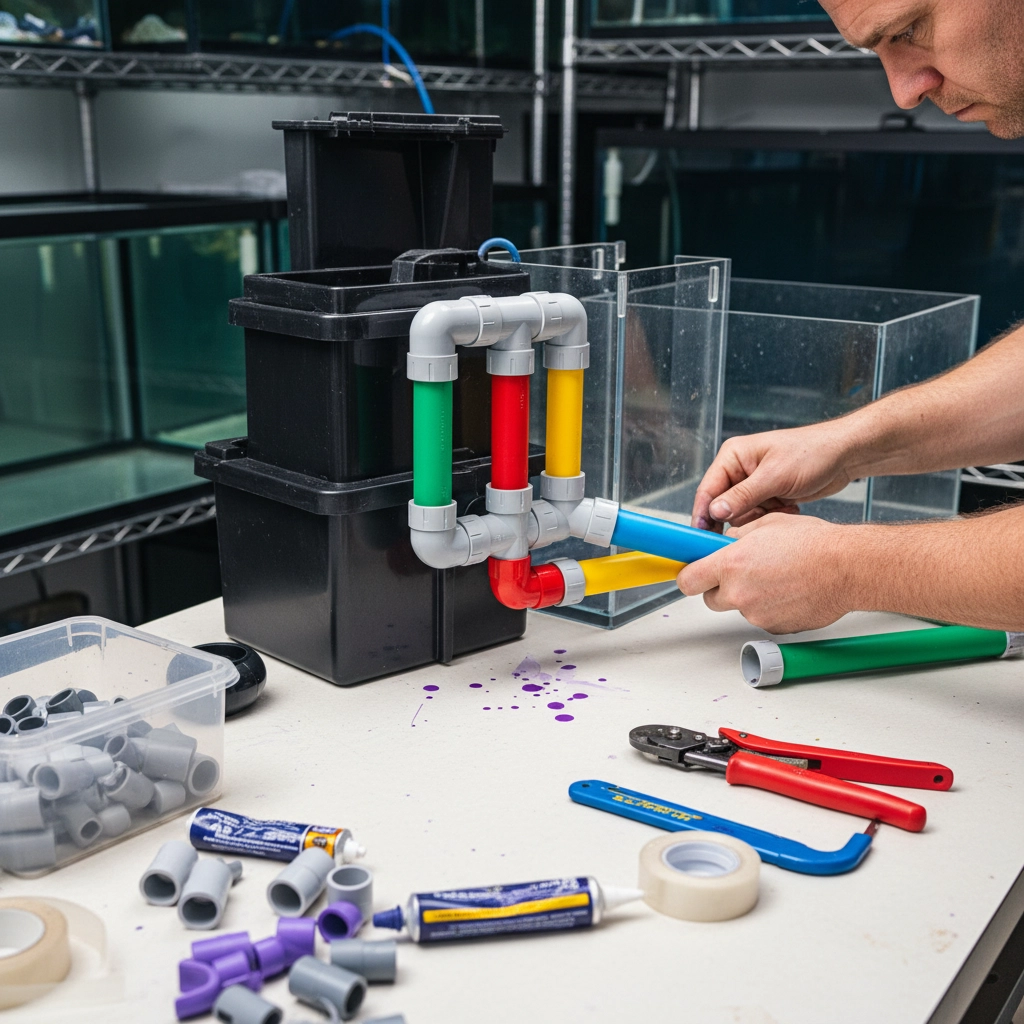
Mind-Blowing Filtration Facts That'll Change Your Perspective
Here's where things get really exciting: millions of dollars in commercial aquaculture research has established that K1 media fluidized bed sumps are 2-10 times more effective per cubic inch than any other filter type available to hobbyists.
To put this in perspective, the efficiency hierarchy looks like this:
- Fluidized bed sumps (most efficient)
- Submerged static media sumps (2x less efficient than fluidized beds)
- Wet/dry sumps (2x less efficient than static media)
- Traditional trickle filters (8x less efficient than fluidized beds)
This research-backed data explains why serious aquaculture operations and high-end public aquariums rely heavily on sump-based filtration systems.
Saltwater vs. Freshwater: Different Strokes for Different Folks
For reef tank enthusiasts, sumps are practically essential. They enable protein skimmers, refugiums, and the multiple filtration stages that hard corals demand for thriving growth. The ability to maintain stable calcium, alkalinity, and magnesium levels makes sumps invaluable for reef success.
Freshwater hobbyists see more limited benefits unless running heavily stocked systems or serious breeding operations. The investment makes most sense for large community tanks, monster fish keepers, or dedicated breeders managing multiple systems.
Regional Considerations for US Hobbyists
Across the US, sumps have gained tremendous popularity, especially in regions with hard water where the extra buffering capacity helps manage pH swings. Southern states with warmer climates appreciate the temperature stability sumps provide, while northern hobbyists value the backup heating capacity during winter power outages.
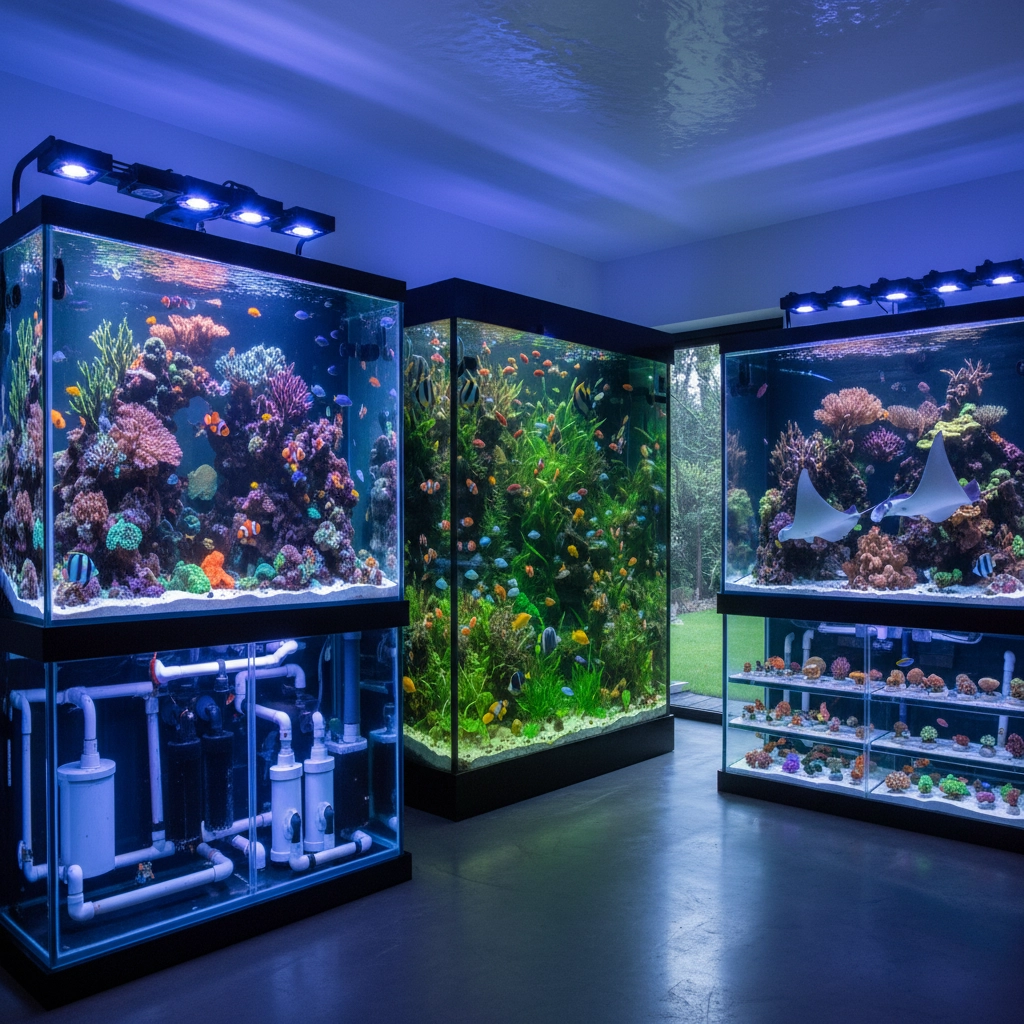
Making Your Decision: Should You Take the Plunge?
Go for it if you have:
- A tank 75+ gallons that will be well-stocked
- A reef tank (sumps are nearly standard)
- Multiple tanks in one location
- Serious breeding ambitions
- DIY skills and patience for setup
Stick with traditional filters if you have:
- Tanks under 75 gallons
- Limited technical experience
- Noise-sensitive environments
- Budget constraints
- Preference for plug-and-play simplicity
Cool Maintenance Professional Insights
Many US aquarium maintenance professionals recommend sumps for their commercial clients specifically because they provide more consistent water parameters and easier equipment access. The improved reliability means fewer emergency service calls and healthier long-term outcomes for expensive fish collections.
For hobbyists considering professional maintenance services, sump-equipped tanks often cost less to maintain due to the superior water quality and reduced equipment failures.
The bottom line? Sumps represent the next level of aquarium keeping: they're not necessary for every setup, but they're transformative for the right applications. Whether you choose to dive into sump filtration or stick with traditional methods, the most important thing is creating a thriving environment where your aquatic friends can flourish.
Ready to dive deeper into your aquarium journey? Follow us on social media for daily tips, stunning tank features, and the latest hobby insights! Have questions about sumps or other equipment? Reach out: we love helping fellow enthusiasts navigate their aquatic adventures. And don't forget to share photos of your amazing setups with us: we feature the best community tanks and love celebrating your underwater masterpieces!
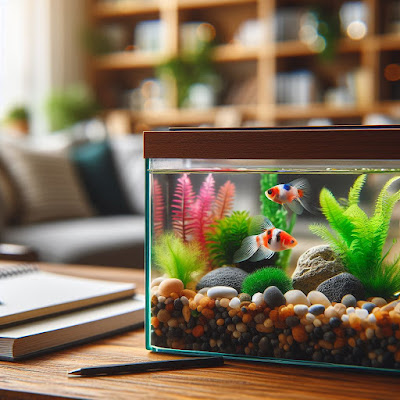






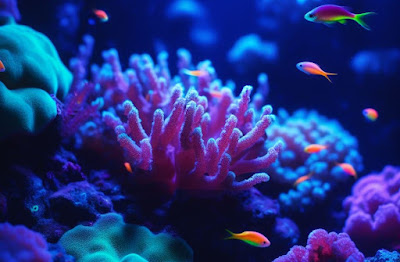
.png)
